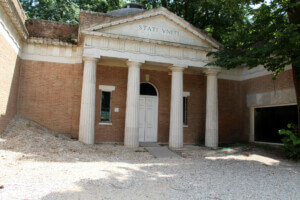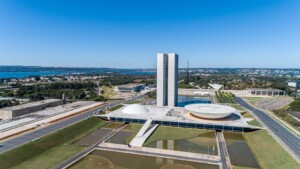The Brazilian pavilion, a postwar structure initially envisioned to bridge across the canal connecting the island of Sant’Elena to the Biennale’s Giardini, went through several design iterations and several architects before ending up in its current state. A simple, straightforward, modernist composition, the Brazilian pavilion consists of two parallel but differently sized rectangular volumes skewered down its middle by a capped corridor. Like many other national pavilions that have sat through decades of political malfeasance back home, this one too has its own darker past. In the case of the current installation, Terra, its curators Paulo Tavares and Gabriela de Matos focused on interrogating the uneven legacy of Brazilian modernism. This work won them the Golden Lion for Best National Participation. Tatiana Letier Pinto takes up many of the issues presented by Terra in her interview with the curators.
Tatiana Letier Pinto (TLP): Brazil has already received some distinctions at the Venice Architecture Biennales, such as the Golden Lion for Lifetime Achievement awarded to Paulo Mendes da Rocha in 2016 and the same tribute, although in memory, went to the Italo-Brazilian architect Lina Bo Bardi in the 2021. However, none compare to the recognition received this year with the Golden Lion for Best National Participation. What do you attribute this award to?
Paulo Tavares (PT): The pavilion is about reconstruction, restitution, and reparation. And, of course, such questions are very crucial today within, and as well as much beyond, the field of architecture. Protests against racism and colonialism, as well as challenging memorials and dominant heritage narratives, have become crucial. The Gold Lion recognition acknowledges this in our work. The Venice Biennale jury, in fact, mentioned this in their statement, saying that the pavilion embraces both research on modes of reparation and reclaiming heritage and an actual intervention on that. And by that, they meant the intervention into the Brazilian pavilion itself, which is a modernist building. So the idea that we are dealing with this modernist heritage not as a neutral element but, in fact, intervening critically into the very architecture in order to challenge certain canonical narratives was also a powerful element within the pavilion. And, of course, for us is an honor to join the group of laureates from Brazil: Paulo Mendes da Rocha and Lina Bo Bardi. And especially Lina, because in many different but non-explicit ways, her work and thinking were also inspirations for the pavilion.
TLP: The 18th Architecture Venice Biennale brought, on for the first time in its history, a Black female architect as curator. With the theme Laboratory for the Future, the Scottish-Ghanaian Lesley Lokko worked on topics of decolonization and decarbonization, shifting the eurocentric views of past biennials and bringing new perspectives to architecture and new visions of the world. How does your work for the Brazilian Pavilion respond to Lesley Lokko’s call?
PT: As we claim the curatorial text as well as in the second room, the second gallery of the pavilion, we are showing heritage practice that embodies certain types of knowledge and technology where the relationship with the earth is registered in a much more sustainable, egalitarian, and ecologically sound way. Cultivated by ancestral indigenous populations in Brazil, these practices are also characteristic of those of the African diaspora. These are practices that have been acknowledged even by institutionalized heritage bodies like UNESCO for the ecologically sound way of dealing with the earth, planting, and managing the forest. Therefore, understanding those practices as forms of landscape design and architecture implies that we also decolonize the ways in which we see architecture. And by doing that, we also recognize that those are very sophisticated contemporary technologies that are pointing towards a decarbonizing future.
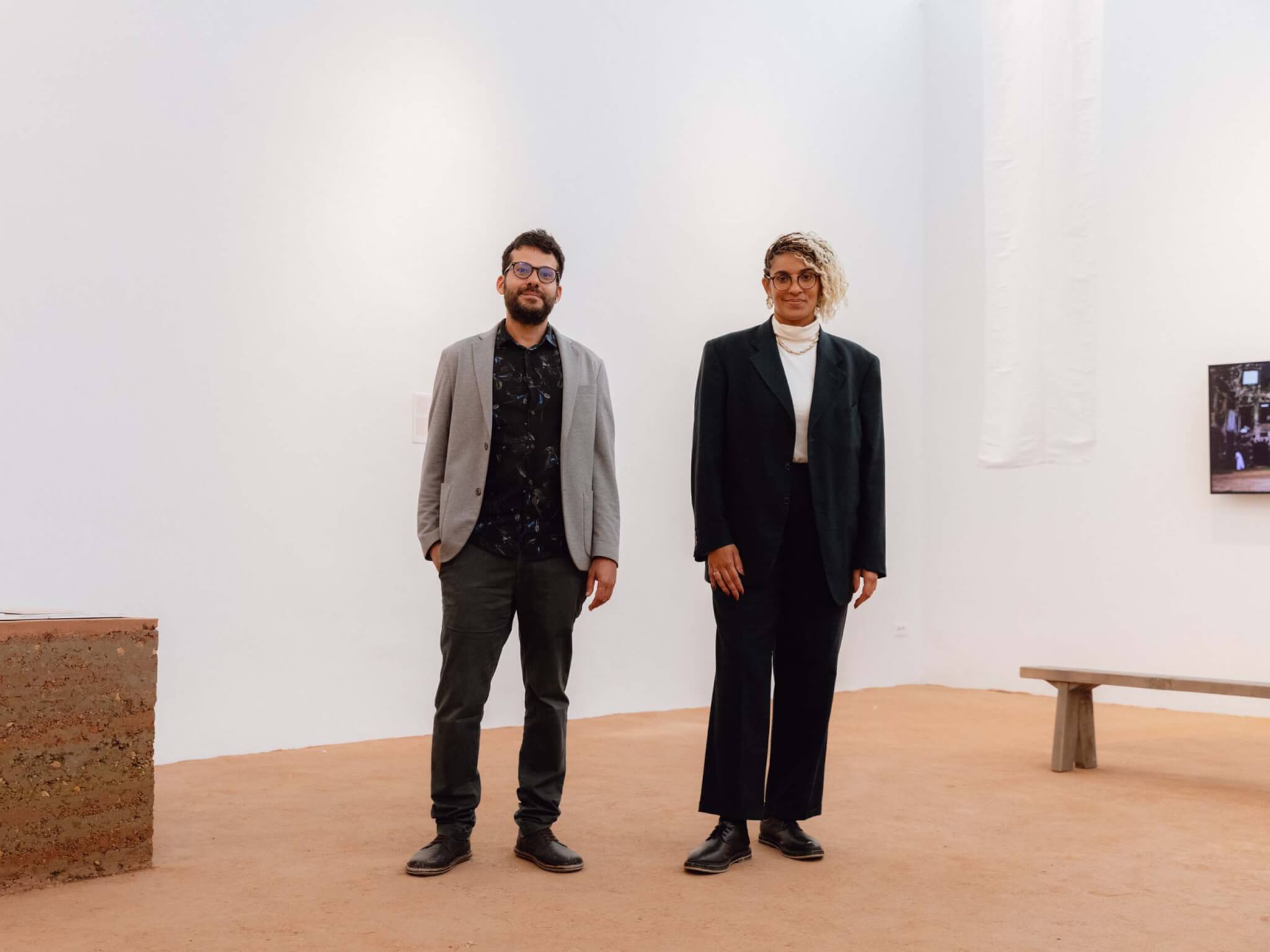
TLP: The exhibition space is divided into two parts. Immediately upon entering “De-colonizing the Canon,” questions are raised about the construction and recognition of Brasília as a heritage site. But in the next room, you highlight neglected heritage sites, including some natural elements such as the Jauaretê Waterfall, expanding the notion of what constitutes architecture. Could you tell us more about the curatorial work?
PT: The pavilion is a meditation on, and a reclamation of, heritage. So everything that you see in the pavilion is in some way a heritage element. For example, as you mention, in the first gallery where we present a dissident history of Brasília, reclaiming the territory by afro-Brazilian and Indigenous cultures in Brazil that challenges the colonial assertion that the city was built in empty territory. But also in the second gallery, which we call “Places of Origin, Archaeology of the Future,” we show certain heritage reclamation processes by those communities that have been neglected and erased in many different ways by the architectural canon and its discourses. By displaying these practices, as we say in the title, we also try to illuminate a possible, more equalitarian, sustainable future.
The whole pavilion is somehow placed around the notion of heritage and memory, reparation and restitution of memory and heritage. And in that sense, for us, it was very important, in as much as we are challenging the sort of canonic modernist narrative, to understand that the building that was designed by Henrique Mindlin, one of the most important figures of Brazilian modernism, was not a neutral space, right? It carried distinct ideologies and imaginaries in representations of nationalities. So it was essential to challenge the very architecture of the building, and say out loud: It is not neutral. Therefore, we designed a site-specific installation which we call aterramento, which means “grounding the building.” It covers the entire floor with an earth layer in a hammered displaced system throughout the pavilion, referring to a sort of archaeological site.
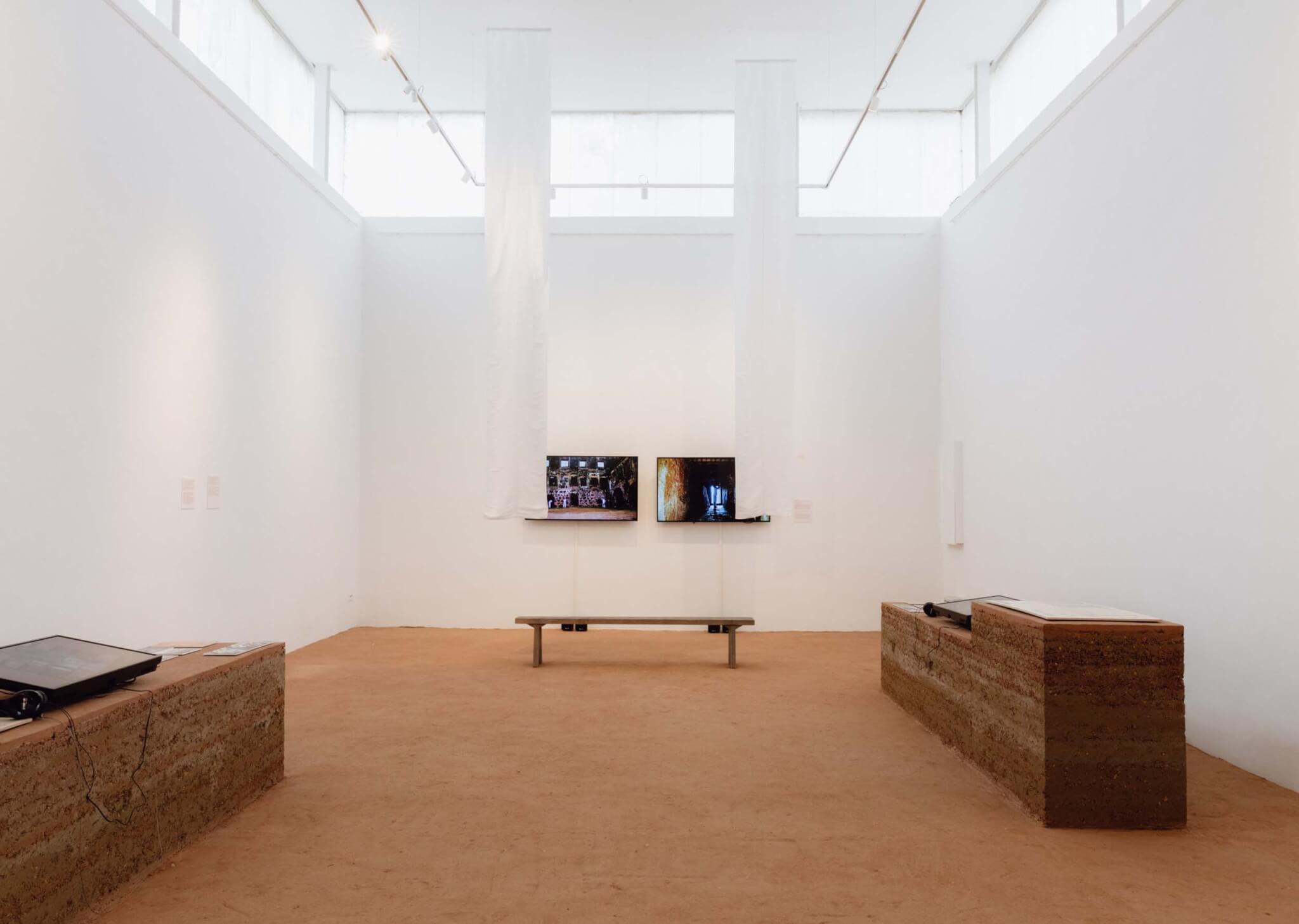
TLP: What I find very powerful and beautiful about curatorial work is how through architecture, we end up discussing politics, human rights, democracy, social justice, land rights, racism, and more. Architecture ceases to be a product to be consumed, as it is commonly presented in mainstream architecture but becomes a means of discussion. Upon the external facade, you placed the metal railing to tell us about the sankofas, the light fabrics hanging in the ceilings bring references to terreiros. Plus, the main theme, earth, is also used as a construction element. Could you explain this element’s allusions and how did the research and development process of the exhibition unfolded?
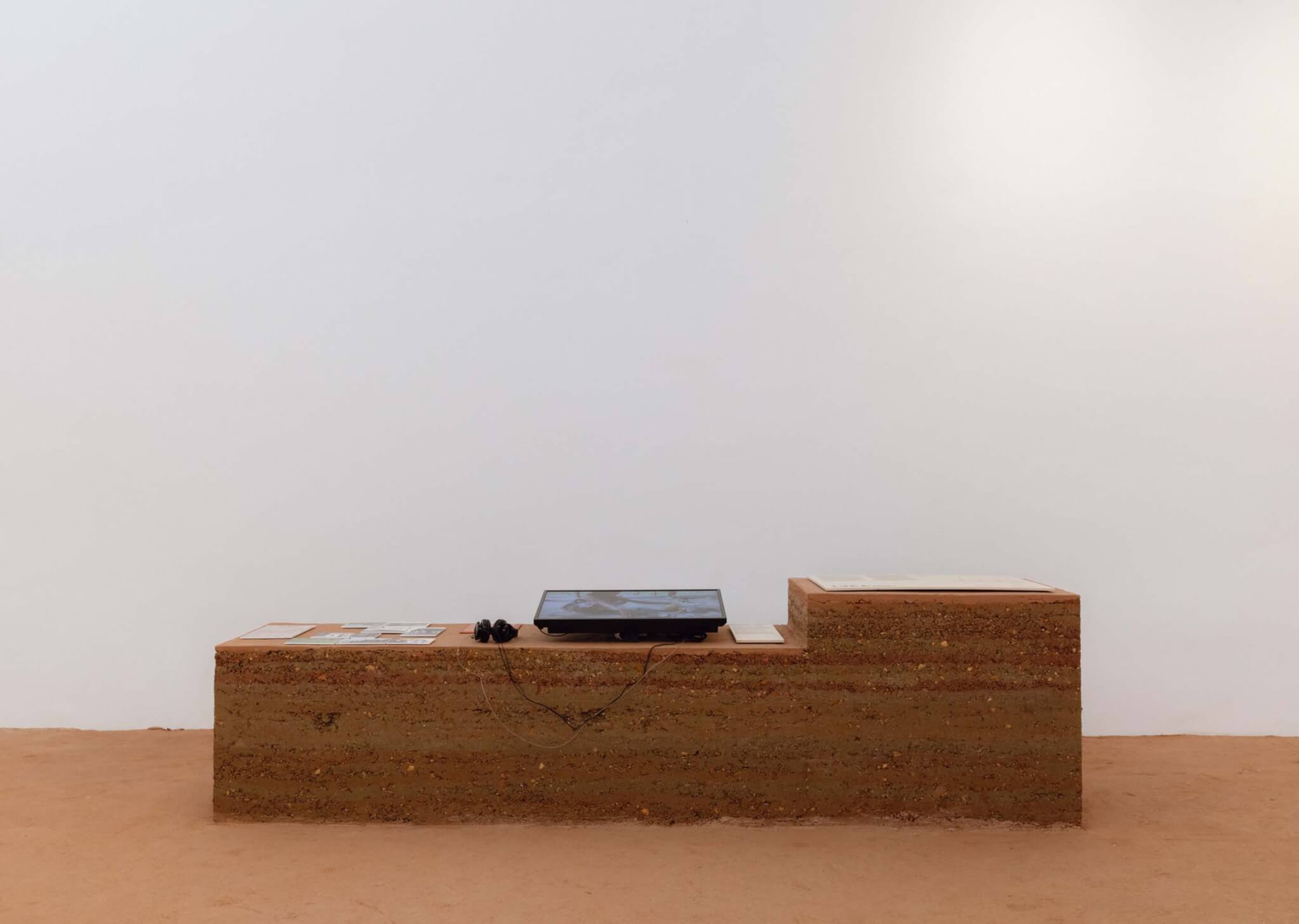
Gabriela de Matos (GdM): The proposal to bring the railing with the symbol of Sankofa right at the pavilion’s entrance was a way of indicating to the public that what was to come inside the pavilion’s galleries would be presented by another notion of time. Sankofa represents an understanding of time from an African logic, less western and Eurocentric. Because it’s about going back to the past to learn from ancestral wisdom, and from there, using that to enable new futures. In a way, all the experiences we bring to this curatorial proposal are related to this notion of time.
The fabrics also represent ancestral African and Afro-Brazilian knowledge. In addition to bringing with them a wisdom that in Africa is millenary, they are also a symbol of African self-affirmation for Africa and all its diaspora. Like Sankofa, the fabric also communicates this diasporic identity.
Paulo and I share a research interest in decolonial vision and have both done theoretical and practical work that expands and broadens the understanding of architecture and urbanism. We place ourselves within this group of theoretical and practical architects who have been making this movement within the field. Despite my research being more centered on Africa and its Brazilian diaspora, and Paulo on understandings that question the canon of Brazilian architecture and its colonial narratives, we found a point of convergence. At this point, we share an interest in diversifying the understanding of land. The development of the exhibition springs from this essential meeting, and from knowledge exchanges with these peoples and communities that are directly related to the narrative that we build upon in Terra.
TLP: Brazil is seeking to recover from a challenging and turbulent period in its political history. The creation of the Ministry of Indigenous Peoples in Brazil was received with great enthusiasm and hoped for the protection of native peoples. However, recently we have seen that rights may be gained but are only sometimes guaranteed. Last week, a new law was passed in the National Congress reducing the possibility of demarcation of Indigenous lands and weakening the powers of the Ministry. How can the awarded work in the Pavilion contribute to uplifting voices in this debate?
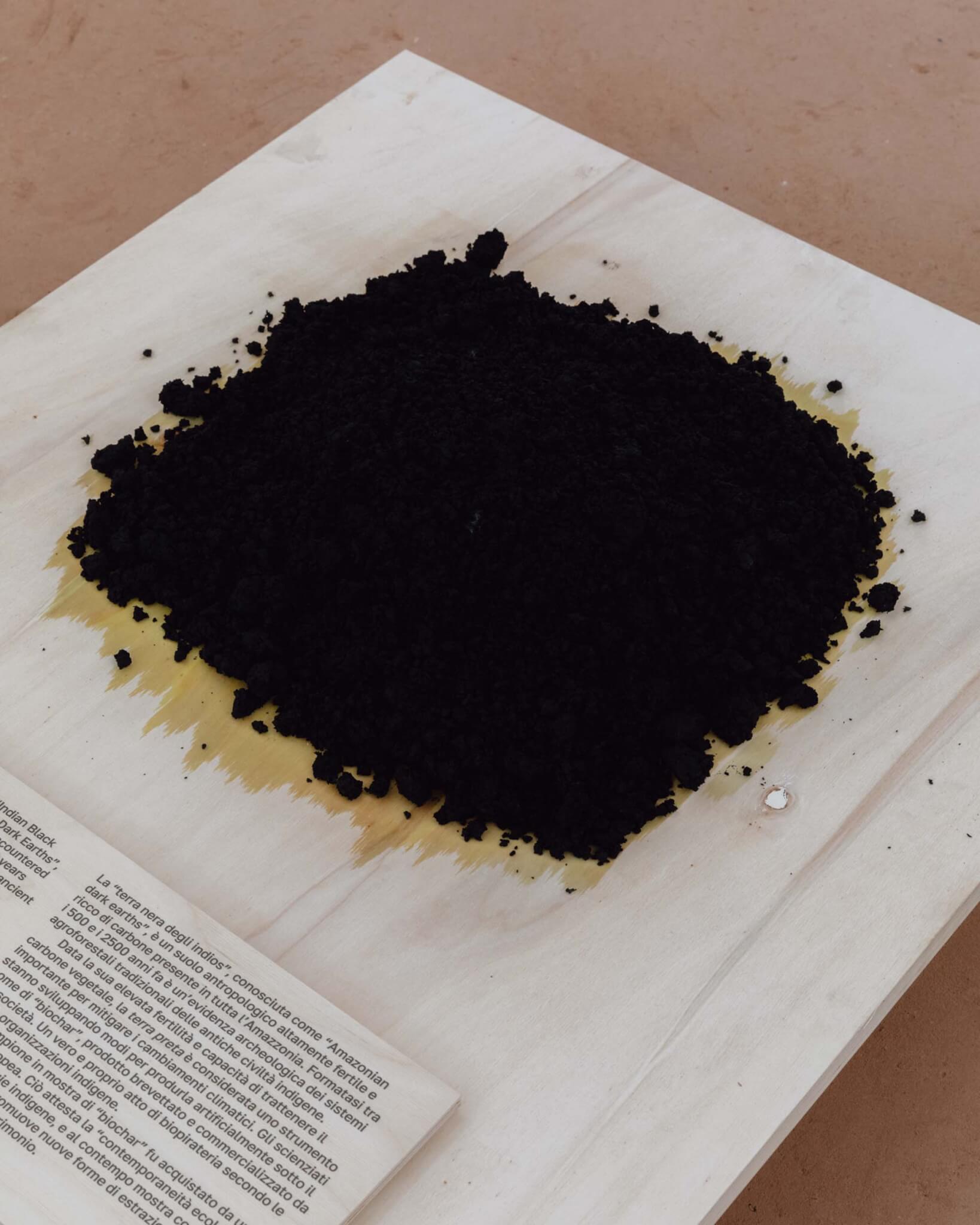
PT: We hope that the Golden Lion arriving here in Brazil will be a symbol against this new law, this neocolonial gesture currently passing through Congress. We have recently visited Terreiro da Casa Branca in Salvador, one of the projects featured in the Pavilion. What was remarkable in this encounter and very emotional and meaningful was that Ekedy Sinha e Iyá Neuza e Xangô said that the prize arrived to protect their land. They are fighting against loss of their territory, threatened by urban speculation and racist policies. We hope that also for that for Indigenous folks this can be true; that the Lion can be a symbol and help protect their lands. This the political horizon of Terra, within and beyond architecture.
Tatiana Letier Pinto is an architect and researcher who delves into artistic processes such as writing, performances, and public interactions from a decolonial feminist perspective.









